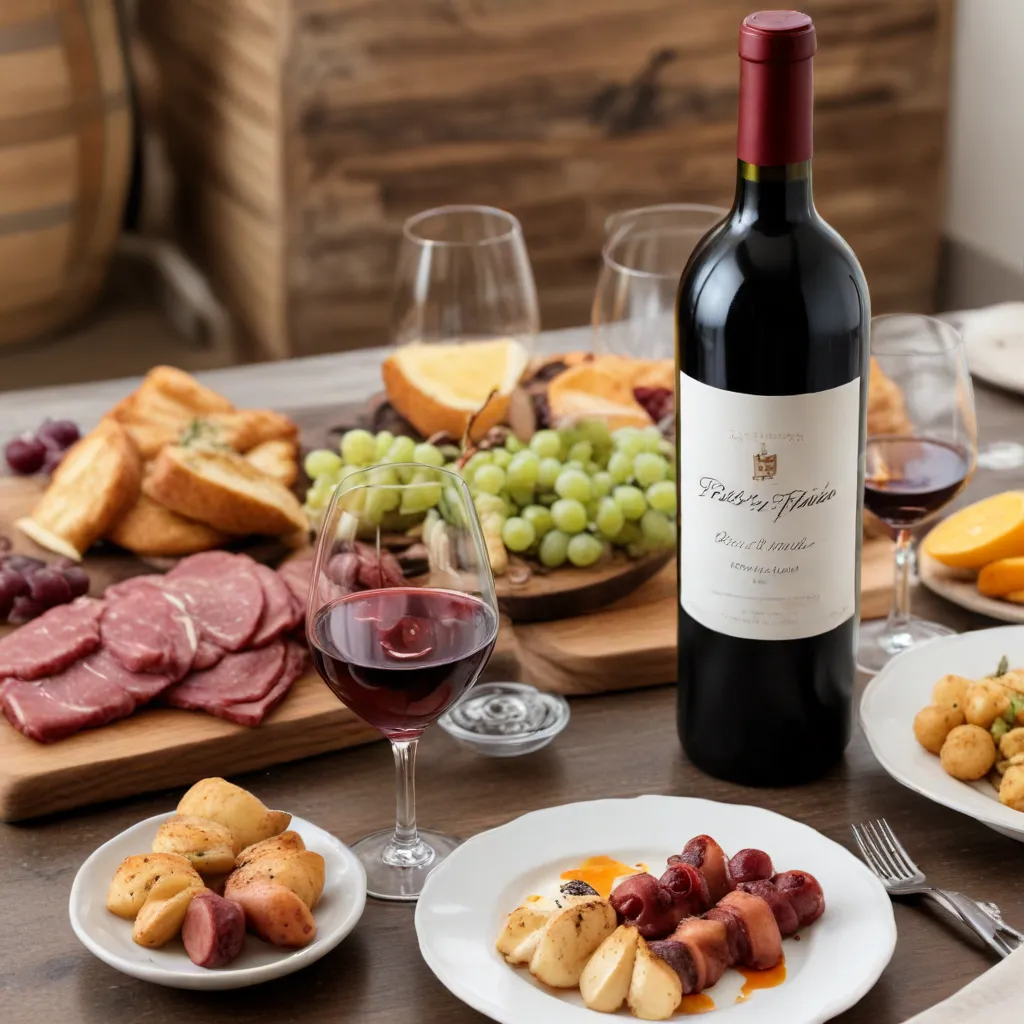
The world of gastronomy is an intricate tapestry woven with the threads of flavors, textures, and aromas. Amidst this intricate tapestry, the art of food and wine pairing stands out as a symphony, where each element plays a unique role in creating a harmonious experience for the senses. The combination of food and wine is not merely about satiating hunger and thirst; it’s a delicate dance that can elevate an ordinary meal into an extraordinary culinary experience.
Fundamentals of Food and Wine Pairing
Pairing food with wine is an ancient tradition that has evolved over centuries, transcending cultural boundaries and becoming an integral part of culinary appreciation. From the rich red wines of Bordeaux complementing a hearty steak to the crisp Sauvignon Blanc enhancing the flavors of fresh seafood, the possibilities are as vast as the varietals themselves. In this exploration of food and wine pairing, we will delve into the basics, unravel the nuances, and discover unexpected combinations that can tantalize the taste buds.
The basic tenet of food and wine pairing is to create a synergy where the combination enhances the overall dining experience. This involves understanding fundamental principles such as matching intensity, considering acidity, balancing tannins and fats, and exploring complementary or contrasting flavors.
When selecting a wine to pair with a dish, it’s crucial to consider the intensity of both the food and the wine. Lighter dishes pair well with lighter wines, while heartier, more robust dishes are best complemented by full-bodied wines. For example, a delicate Pinot Noir harmonizes beautifully with poached salmon, while a bold Cabernet Sauvignon complements a juicy, grilled steak.
The acidity in both food and wine should also be balanced. High-acid wines, such as Sauvignon Blanc or Chardonnay, work well with dishes that have a citrusy or tangy component. On the other hand, a creamy pasta dish may benefit from a less acidic wine like a buttery Chardonnay.
Tannins, found predominantly in red wines, can be softened by the presence of fats in food. This is why a tannic red wine like Cabernet Sauvignon pairs splendidly with a well-marbled steak, as the fats in the meat counterbalance the astringency of the tannins.
Exploring Wine Varietals and Styles
Pairing can involve either complementing flavors or creating a contrast. Complementary pairings enhance similar flavors, like a fruity Zinfandel with a berry tart. Contrasting pairings, such as a crisp, dry Riesling with spicy Thai cuisine, create a dynamic interplay that excites the palate.
Red wine pairings often shine with heartier, more robust dishes. A bold Cabernet Sauvignon or a robust Syrah can complement the intensity of a grilled steak or a rich, slow-cooked beef stew. On the other hand, the delicate nature of a Pinot Noir makes it an excellent match for earthy mushroom dishes or roasted poultry.
White wine pairings tend to excel with lighter fare and seafood. A crisp Sauvignon Blanc can cut through the richness of a creamy seafood pasta, while a buttery Chardonnay can complement the velvety texture of a lobster bisque. The versatility of Riesling allows it to pair well with spicy Asian cuisines, where its natural sweetness and acidity can balance the heat.
Sparkling and dessert wine pairings offer unique opportunities to elevate the dining experience. The effervescence of Champagne can enhance the saltiness of prosciutto and the sweetness of melon, while a luscious Sauternes can create a harmonious partnership with a rich, decadent chocolate dessert.
Classic Cuisine and Wine Matches
The concept of “what grows together, goes together” is a fundamental principle in food and wine pairing. Pairing local wines with regional dishes can create a seamless harmony, as the flavors and terroir of the wine and the cuisine have evolved in tandem. For example, a Chianti or a Brunello from Tuscany can be the perfect match for a hearty Tuscan bistecca alla fiorentina, as the robust tannins and acidity of the wine can stand up to the richness of the grilled steak.
Contemporary global cuisines also present exciting pairing opportunities. The bold, fruity notes of a Malbec can complement the smoky and spicy flavors of Mexican dishes, while a crisp Sauvignon Blanc can provide a refreshing contrast to the creamy textures of a seafood-based paella.
Vegetarian and vegan diners need not be left out of the pairing fun. A well-structured Cabernet Sauvignon can find harmony with a savory mushroom wellington, while a bright, herbaceous Vermentino can elevate the flavors of a Mediterranean-inspired vegetable terrine.
Seasonal and Occasion-Based Pairings
Pairing wines with seasonal ingredients can enhance the dining experience and showcase the bounty of the land. During the warm summer months, a chilled rosé or a zesty Sauvignon Blanc can perfectly complement grilled seafood or a fresh tomato and basil salad. As the weather turns colder, a robust Malbec or a velvety Merlot can provide the perfect counterpoint to hearty stews and roasted root vegetables.
The context of the occasion also plays a role in selecting the right wine pairings. For casual gatherings, opt for accessible and easy-to-enjoy wines that can complement a variety of dishes. Save the more complex and aged bottles for special events where their nuances can be fully appreciated.
Ultimately, the art of food and wine pairing is a journey of discovery, where enthusiasts and connoisseurs alike can explore the endless possibilities of harmonious flavor combinations. Whether you’re planning a casual weeknight meal or a celebratory feast, let the principles of pairing perfection guide you towards an extraordinary dining experience.
For those seeking to elevate their culinary escapades, the Wine Garden Inn offers a world-class selection of Sicilian wines and expertly crafted dishes that showcase the synergy between local ingredients and oenological excellence. Embark on a journey of pairing perfection as you indulge in the harmonious flavors that dance on your palate, creating memories that will linger long after the last bite and sip.
